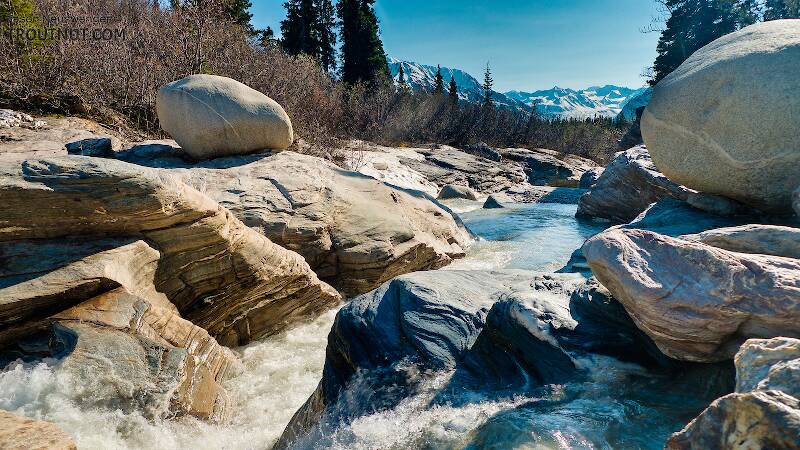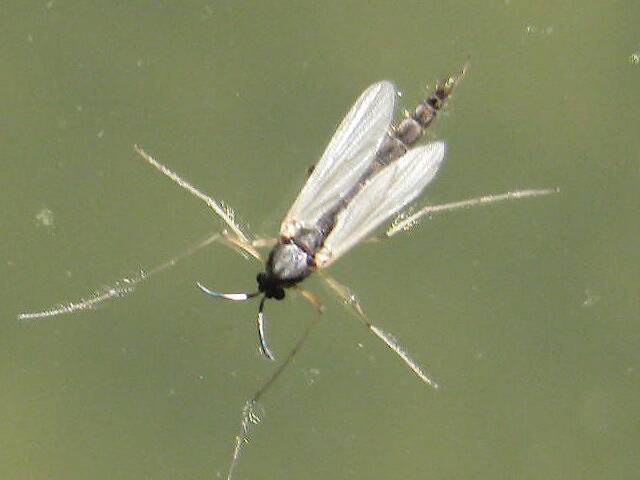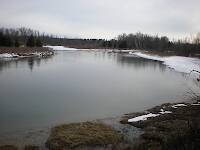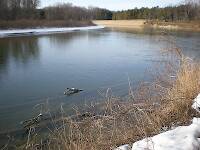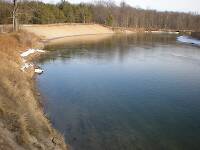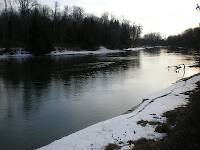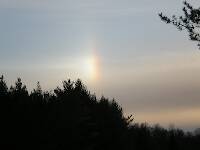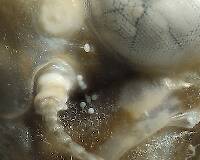
Blue-winged Olives
Baetis
Tiny Baetis mayflies are perhaps the most commonly encountered and imitated by anglers on all American trout streams due to their great abundance, widespread distribution, and trout-friendly emergence habits.
Featured on the forum

Troutnut is a project started in 2003 by salmonid ecologist Jason "Troutnut" Neuswanger to help anglers and
fly tyers unabashedly embrace the entomological side of the sport. Learn more about Troutnut or
support the project for an enhanced experience here.
Catskilljon on May 25, 2014May 25th, 2014, 10:00 am EDT
I wouldn't even bother to ask this if it weren't for what happened yesterday. Last week the sulphurs started popping up on the lower Delaware which is exactly one mile from my home here in PA. I work 2 miles from the river in NJ, right across the river from my house. When the sulphurs are up, we get them all over the exterior of the shops walls as they are attracted to the gas stations lights. I can understand this, as they can probably see the illumination from the river in their mayfly eyes. The thing that I don't understand is this...
Coming back from my fathers house which is 7 miles from the river, a 2 lane road was literally swarming with sulphur spinners, most with eggs, for a distance of over 3 miles in length. This road does not have any streams close by, except for 1 tiny runoff stream that is dry from July to February.
How do these hundreds of thousands of mayflies make it 7 miles from the river? Does the wind carry them? It is so odd to see, they mistake the road for the stream during rainy periods which I see on roads that parallel streams but never when they are so far away from them. I just don't understand this!
What do you think? CJ
Coming back from my fathers house which is 7 miles from the river, a 2 lane road was literally swarming with sulphur spinners, most with eggs, for a distance of over 3 miles in length. This road does not have any streams close by, except for 1 tiny runoff stream that is dry from July to February.
How do these hundreds of thousands of mayflies make it 7 miles from the river? Does the wind carry them? It is so odd to see, they mistake the road for the stream during rainy periods which I see on roads that parallel streams but never when they are so far away from them. I just don't understand this!
What do you think? CJ
PaulRoberts on May 25, 2014May 25th, 2014, 3:23 pm EDT
I've seen spinners over wet roads too. But I can't say much about distance from a watercourse. Maybe there is a stream near the area you aren't aware of? Check Google Maps and look for streams.
Spinners are known to travel, apparently upriver according to research, an adaptation in which adults seed upstream reaches that allows for downstream drift of larvae. But how far are they known to travel and will the leave the natal watercourse?
I have seen (and suspected) spinners quite high over the tree tops, so its possible swarms could get blown off course. I think these high swarms may be males only though, I seem to recall, and females join later. Anyway...
I dunno. Check a map of the area and look for other water courses. I've known some small fertile farmland streams that crank out a lot of sulphurs.
Spinners are known to travel, apparently upriver according to research, an adaptation in which adults seed upstream reaches that allows for downstream drift of larvae. But how far are they known to travel and will the leave the natal watercourse?
I have seen (and suspected) spinners quite high over the tree tops, so its possible swarms could get blown off course. I think these high swarms may be males only though, I seem to recall, and females join later. Anyway...
I dunno. Check a map of the area and look for other water courses. I've known some small fertile farmland streams that crank out a lot of sulphurs.
Falsifly on May 27, 2014May 27th, 2014, 5:28 am EDT
First read this as a primer on polarotactic water insects.
http://jeb.biologists.org/content/207/5/755.abstrac
Then this on asphalt surfaces:
https://www.novapublishers.com/catalog/product_info.php?products_id=18709
http://jeb.biologists.org/content/207/5/755.abstrac
Then this on asphalt surfaces:
https://www.novapublishers.com/catalog/product_info.php?products_id=18709
Falsifly
When asked what I just caught that monster on I showed him. He put on his magnifiers and said, "I can't believe they can see that."
When asked what I just caught that monster on I showed him. He put on his magnifiers and said, "I can't believe they can see that."
Catskilljon on May 27, 2014May 27th, 2014, 8:08 pm EDT
Thanks Falsifly!
This line is great...
Polarotactic insects mistaking asphalt surfaces for water bodies lay their eggs upon dry asphalt after copulation, where the eggs perish due to dehydration.
Ya think?
As a side note, I have never seen this happen on dry roads, even next to the water, only during wet road conditions.
I guess my question was not so much why they are attracted to wet roads, that makes sense, its how did they get 7 miles away from the river in the first place?
Appreciate the info, you college educated dudes are smart! CJ
This line is great...
Polarotactic insects mistaking asphalt surfaces for water bodies lay their eggs upon dry asphalt after copulation, where the eggs perish due to dehydration.
Ya think?
As a side note, I have never seen this happen on dry roads, even next to the water, only during wet road conditions.
I guess my question was not so much why they are attracted to wet roads, that makes sense, its how did they get 7 miles away from the river in the first place?
Appreciate the info, you college educated dudes are smart! CJ
Quick Reply
Related Discussions
Topic
Replies
Last Reply
7
Mar 1, 2011
by Pryal74
by Pryal74
0
Jun 29, 2020
by Wiflyfisher
by Wiflyfisher
4
Jan 19, 2015
by Kschaefer3
by Kschaefer3

